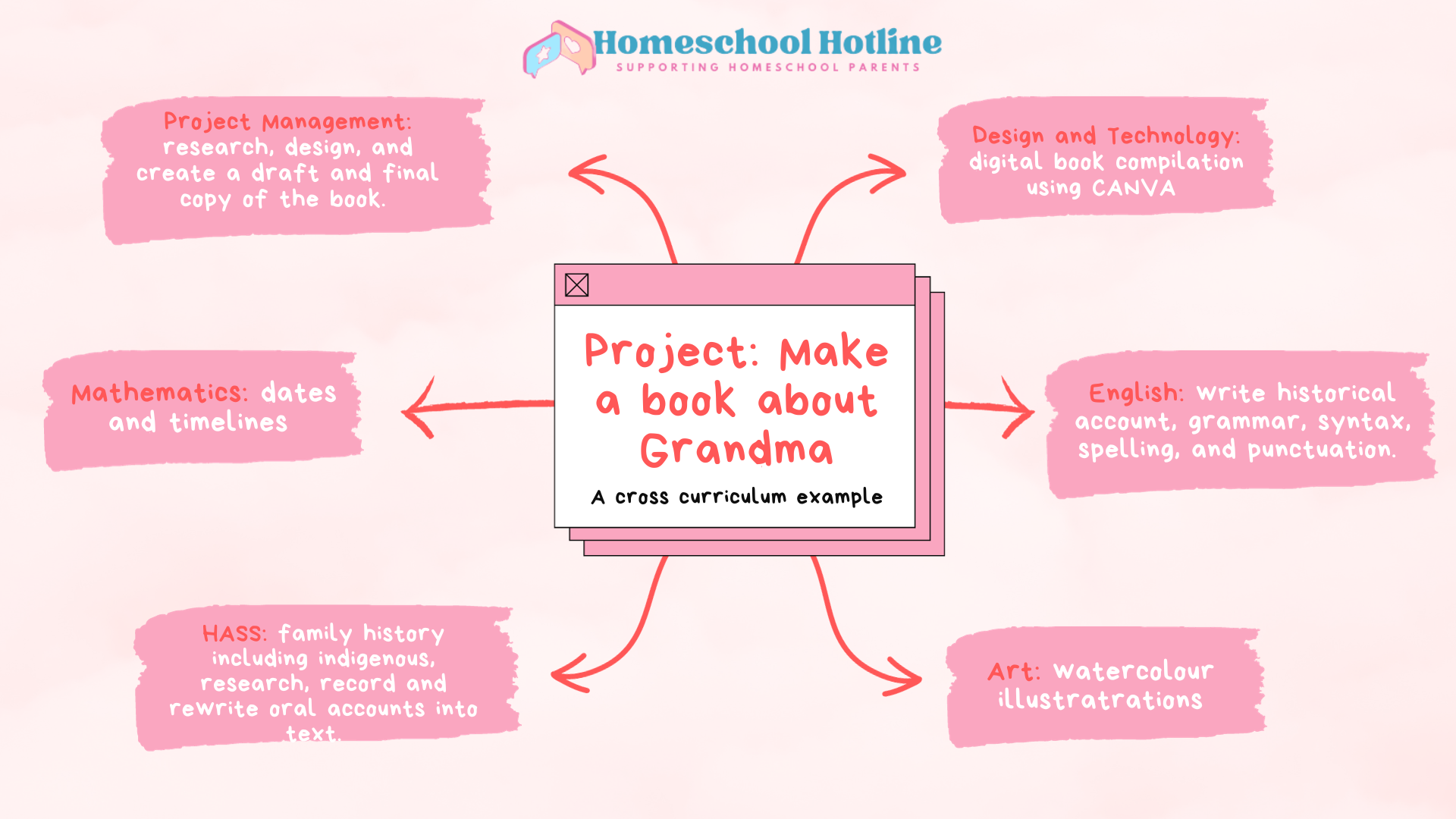Holistic Homeschooling: a cross-curricular approach
From neat boxes to boundless horizons
Growing up, I was accustomed to a structured educational system where subjects were neatly compartmentalised. Each school year, I meticulously covered my exercise books, labeling them with my name, grade, and subject. Lessons followed a typical schedule, with days dedicated to specific subjects. This clear division of subjects continued through high school, where I used a clip folder filled with foolscap papers and cardboard dividers to keep each subject organised.
Over the years, the education system evolved, with changes in stationery and teaching methods. Contact paper was replaced with reusable book covers, and foolscap gave way to laptops. While the Australian Curriculum introduced cross-curricular elements, the subjects still seemed distinct, as reflected in the semesterly school reports that focused on individual subject grades.
When I embarked on homeschooling my children, I initially mirrored the traditional school setup, creating a checklist of subjects and aiming to teach them in isolated compartments. However, as our homeschooling journey progressed, I began to appreciate the magic of cross-curricular learning. I realised that by breaking free from these rigid boxes, we could explore the beauty of interconnected knowledge.
Now, as I observe our homeschooling approach, I see the benefits of embracing a multidisciplinary perspective. We've discarded the neat boxes and started developing skills and understanding across multiple areas and subjects. Our learning journey has become more holistic, relevant, and engaging, allowing my children to thrive in a world that demands versatile knowledge and critical thinking.
An example of a year 6 homeschool project that encompasses multiple learning areas.
An excerpt from my daughter’s picture book about her grandmother; a cross-curricular approach.
Cross-curricular learning offers several advantages:
1. Real-world relevance: Subjects in real life are not isolated from one another, and learning in an interdisciplinary manner helps students see the connections between various fields. This approach can make learning more meaningful as students can apply their knowledge to practical situations.
2. Critical thinking: When students explore topics from multiple angles and perspectives, they develop critical thinking skills. They learn to analyse problems from different viewpoints and find creative solutions, which is an essential skill for success in any field.
3. Holistic understanding: Cross-curricular learning encourages a holistic understanding of complex topics. Instead of memorising isolated facts, students can grasp the bigger picture and understand how different factors interrelate.
4. Engagement and motivation: Learning becomes more engaging when it's not limited to one subject at a time. Students may develop a passion for a topic when they see its connections to other subjects, leading to greater motivation to explore and learn.
5. Preparation for the real world: In professional and everyday life, people often need to draw on knowledge from various fields to solve problems and make decisions. Cross-curricular learning prepares students for this reality.
It's important to note that cross-curricular learning doesn't mean abandoning subject-specific knowledge; instead, it enriches it by showing how subjects complement and interact with each other. As a homeschooling parent, you have the flexibility to tailor your curriculum to suit your children's interests and learning styles, making cross-curricular learning an excellent approach for personalised education.
As you continue your homeschooling journey, you can explore project-based learning, thematic units, and other methods that promote interdisciplinary learning. These approaches can foster a love for learning and equip your children with valuable skills for their future endeavors.


